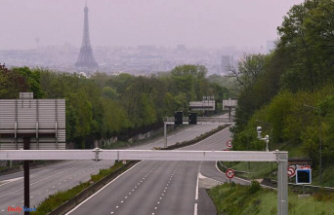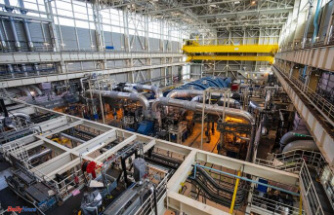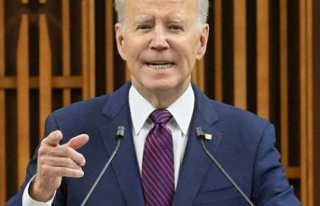In the land of the diesel king, there is no going back. France, so dashing to distribute diesel engines by the hundreds of thousands, was never able to defend it when regulatory dogmatism emerged. At the same time, instead of giving up, the Japanese at Mazda have, as usual, worked without preconceptions on a new diesel that overturns all preconceived ideas about it.
The brand will soon launch on the European market a 6-cylinder in line placed longitudinally (German style), running on diesel and emitting less than 130 g of CO2. With a consumption of 5.2 l/100 and a range of more than 800 kilometres, it is cut out for heavy riders who want, at 50,000 euros on a CX60, to have a work tool that does not require you to build skilful refueling plans as with electric.
Laid in Brussels, the straitjacket inflicted on polluting engines is perfectly respectable, on the condition of letting the engineers express themselves to find the best way to purify them. Which is obviously not the case. Instead, European white-collar workers dogmatically pointed to the solution: electric, nothing but electric.
We must overcome the bad affair of dieselgate and the flogging which consists of putting all diesel fuel engines in the same trash can and realize the particular advantages of this technology. With its high compression ratio, it already burns gases more completely, which explains its inherently lower fuel consumption than gasoline. But, based on this observation, it was necessary to do even better and not only with downstream filtration.
Mazda sent its Professor Nimbus to European journalists, who came to present the strengths of its new generation engine with powerful graphics and animations. With a basic premise adopted since the wave of "downsizing": at Mazda, each job corresponds to an ideal size of engines. And rather than reducing them, Daisuke Shimo ensures that on a large SUV like the CX60, it is indeed a… 3.3 liters that must be installed. It now does this longitudinally, which allows it to add different hybrid or electric systems and transmissions in the future without any installation problems. From memory, the last in-line six-cylinder diesel presented was that of Mercedes, which had thus rallied to the BMW solution by abandoning the V6. But that was in… 2016.
A lot of diesel has since flowed at European pumps, but less and less, given the threats that hover, especially from certain cities that want purely and simply to prohibit access to diesel, without distinguishing between technologies and generations. An absurdity of course which could be pleaded as blind discrimination where certain diesels meet current standards. This is the case of the Mazda, crowned with a Crit'Air 2 sticker in France, and emissions of 128-130 g for the 2.0 l version.
How did Daisuke Shimo's team achieve this incredible result on a 1.9 ton vehicle? In several ways, starting with a double combustion chamber whose ovoid shapes create a stirring effect that greatly improves combustion, triggered by several differentiated injections. Combustion thus takes place in a lean mixture, forcing the quantity of air in relation to that of fuel. This system, called "DCPCI", is the pride of the Japanese, who have also designed a block no heavier than a four-cylinder. It is available in 200 hp and rear-wheel drive and 254 hp and punctual 4-wheel drive, with sensors engaging the front wheels if necessary.
The treatment of cold emissions is particularly neat, with a sort of accelerated idle on start-up forcing the recirculation of exhaust gases to reduce gross NOx emissions in real conditions and not in the laboratory. "Depending on the circumstances, the system can run for up to eight minutes," said Laurent Thézée, the boss of Mazda France. But the goal is to start as quickly as possible, which further accelerates the ideal temperature rise for efficient filtration, in particular of the SCR catalyst.
To support this already spectacular performance, Mazda has resorted to a 48 V light hybridization, a solution that it considers necessary to extend to the entire range in the long term. It should be enough for ten years to satisfy the rules (while still waiting for the content of Euro 7) without taking the all-electric step.
Consisting here of a 0.33 kWh lithium-ion battery housed in the floor and a 12.4 kW electric motor, it assists the internal combustion engine on start-up and under light loads. Mazda has calculated that on the WLTP cycle, it runs alone 37% of the time, leaving the diesel engine off precisely where it is least efficient. As it is in the city that this happens, the quality of the air is largely preserved. The battery is powered by the energy recovered during deceleration and braking.
Our essay (to be read elsewhere) situates in real life the advances provided by this winning tandem which must still reassure buyers. "We keep a professional clientele very attached to diesel and even returned from all-electric which is not suitable for large wheels says Laurent Thézée. They are already convinced of the validity of the solution and, at 50,000 euros for the 200 hp version, we have a competitive and rational offer. It remains to reassure companies about the sustainability of the solution. This is why we have set up financing and long-term rental solutions that exempt these users from reselling the vehicle, in a context that may have changed. It comes back to us at the end of the contract and it's up to us to manage the rest." Even if the decisions of Brussels are unpredictable, at Mazda, we seem very confident in the next few years which will remain diesel.












